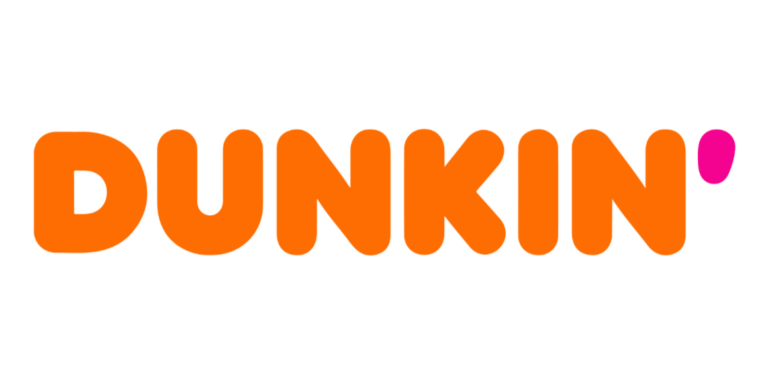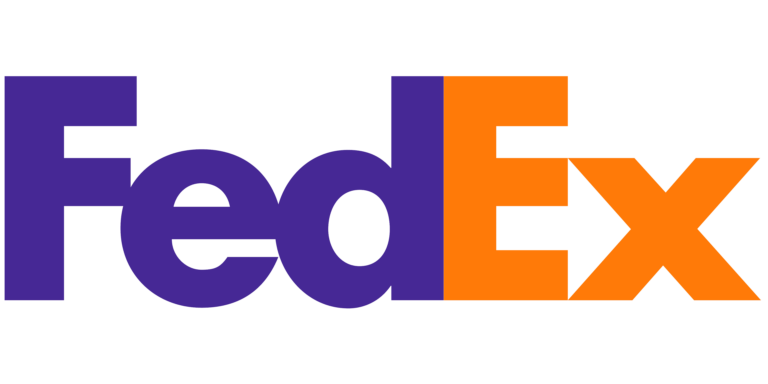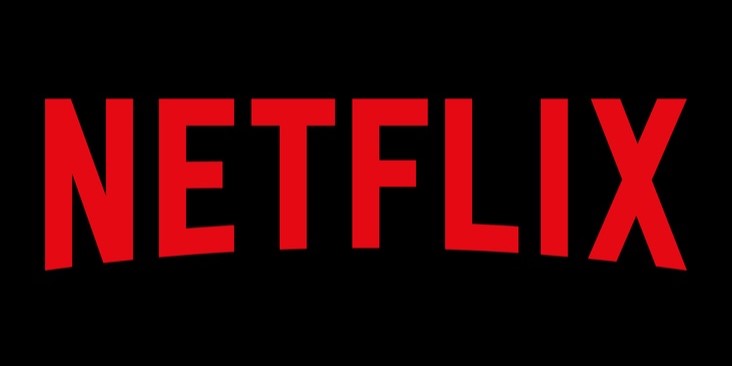How to Find Target Audience in 9 Steps (with Examples!)
I guess that you've probably seen some random product ad and thought: “Who is this for?” Maybe someone just made a cartoon-style ad for an established company. Marketing campaigns that miss the mark often start by misidentifying their target audience. You might want to use Publuu flipbook maker software to showcase your products - but the question is, who are you trying to reach?

You can create targeted campaigns that match your audience's needs and interests only by understanding them. This not only saves money by avoiding wasted marketing efforts but also increases sales and brand loyalty. From this guide, you'll learn how to find your ideal customers and appeal to them, what a target audience is, why it's important, and, most importantly, what steps you can take to discover yours.
Understanding your target audience
What is a target audience?
A target audience is a specific group of people who are most likely to be interested in what you're offering, whether it's a product, service, or information. In short, this is a segment of the population most interested in hearing about your marketing campaigns.
All target audiences have certain characteristics in common, such as age, location, interests, or needs. Potential customers are many, and you need to select a group that closely matches your offering. For example, people in their 30s tend to start families, so they are more interested in toys and education. To reach your target audience, you need to create campaigns that target customers in a precise, well-thought-out manner.
How to identify your target audience step-by-step
You need to start with research and proper planning before you create your marketing strategy. To reach different target audiences, you need different ideas.
1. Analyze your current customer base
Start by looking at who is already buying your product or service. You need to have a good idea of your target market before planning your marketing and sales campaigns. Collect data on their demographics (age, location, interests, etc.) through customer surveys, social media interactions, or your CRM/e-commerce platform. Tools like Google Analytics or an analytics package from Publuu can help you determine your main customer segment.

2. Conduct market research
Look at industry trends, consumer behavior reports, and market research to identify gaps or opportunities your product or service can fill. Read reports, and industry articles, and talk to colleagues to understand how they operate in a competitive market. This research can help you understand the broader market and potential target audience. You can read more about using tools to analyze social media platforms in our Knowledge Base.
3. Analyze the competition
Study your competitors to understand who they are targeting, what marketing channels they are using, and how they are positioning their products or services. For example, if there is already a sandwich bar in your city, you can look for a different target audience.
4. Conduct surveys
Never underestimate the power of customer feedback. Send surveys to existing customers or target audiences to gather additional information, preferences and opinions. This can help you better understand their needs and interests.
5. Create buyer personas
Based on the data collected, create detailed buyer personas that represent different segments of your target audience. These personas should include demographics, behaviors, pain points and other relevant information.

6. Define who your target audience is not
Clearly identify groups or individuals who are not part of your well-defined target audience. This will help you focus your marketing efforts and resources more effectively. For example, if you offer software for freelancers or large companies, you know that amateurs or passionate creatives might not be a part of your target audience.
7. Use similar audiences
Use advertising platform tools that allow you to find “similar” audiences based on existing customer data. These tools can help you extend your reach to new potential customers who have similar characteristics to your existing audience.
Monitor conversations, mentions and trends on social media platforms related to your brand, industry, and target audience. Social media analytics can provide valuable information about their interests, weaknesses and engagement with competitors. For example, you can search for specific keywords in subreddits or follow specific hashtags on X.
9. Continuous review and optimization
As you gather more data and interact with your target audience, constantly refine your personas, messages, and marketing strategies. The needs and preferences of your target audience can change over time, so it's important to stay up-to-date.
Types of target audiences
If we can pinpoint these various target groups, it is worth dividing them into several segments. Such target groups are not mutually exclusive. In general, marketing professionals combine multiple segmentation criteria to more accurately define the ideal target audience.

Demographics-based
Divide the target audience based on demographic characteristics such as age, gender, location, income level, education level, etc. This information can often be found based on the customer base, data, and consideration of factors such as their age and location.
Psychographics-based
Segment customers based on their personality traits, values, attitudes, interests, and lifestyles. Such data is often found in analytics and can sometimes be inferred indirectly. For example, if a large segment of your audience in Europe uses iPhones to browse your site, it can be inferred that they are wealthier than users of low-cost Android phones.
Behavior-based
Focus on audience behaviors and activities, such as buying patterns, product usage, interactions with brands, and online activities. You can learn more about this group by tracking their purchases. For example, if you offer tech support for your customers, you can identify the tasks that cause problems.
Firmography-based (for B2B)
This is relevant for companies whose customers are other businesses. Segment the audience based on characteristics such as company size, industry, revenue, and number of employees. Often much of this data is publicly available in government records or even on the company's website.
Target audience vs. target market
However, don't confuse the target audience with the target market. The target audience refers to a more specific group.
Target market
This is a broader pool of potential customers. Not everyone in the city will visit your sandwich bar - but the city is still the main market!
Target audience
It's a specific group within the market you focus on. These are the people you know are most likely to identify with what you have to offer. For example:
-
Target market: Pet owners.
-
Target audience: Dog owners between the ages of 25 and 40 who live in urban areas and are active on social media.
Many companies might have multiple target audiences. For example, software could target professionals, freelancers, or amateurs. You might adopt different approaches or even different versions of your product to address specific target audiences!
This targeted approach saves resources and helps you connect with the right people who are more likely to become your customers.
Examples of successful audience targeting
Many recognizable brands have built their position on understanding their current customers, from Starbucks to Nike. Target audience research can help you become recognizable and show that you care about your users. Here are some target audience examples, showing how famous companies won their position.
1. Dunkin'
Dunkin' is a coffee shop franchise that is well-known in the United States. Relatively recently, they decided to change their target audience: from ordinary blue-collar workers to a broader demographic, including students, young professionals, and families. This is a case study showing how they changed their marketing message to suit this new target demographic.

Product offerings: Seeing that younger audiences want healthier options, Dunkin' introduced products such as oatmeal, whole-grain bread sandwiches and lower-calorie sugar-free drinks. They also introduced trendier flavors and limited-time offers to satisfy millenials' love of novelty.
Localization strategy: To reach new audiences, both office workers and students, Dunkin' focused on opening locations near office parks, universities and public transportation hubs where these groups would stay.
Social media marketing: Dunkin' used digital marketing, soliciting new product ideas directly from customers on social media. They also established partnerships with influencers, such as the Charli drink from Charli D'Amelio, to grab the attention of Generation Z.
Brand evolution: In 2019, Dunkin' removed “Donuts” from its name to modernize its image from a donut store to an all-day modern cafe brand with a focus on beverages. Its marketing changed from celebrating hard-working people to a message focused on fun and entertainment.
2. FedEx
FedEx is a global courier company that targets anyone who needs to ship something. Their target audience includes companies of all sizes and e-commerce retailers.

Product offerings: FedEx provides fast and reliable shipping options with competitive rates. They offer various shipping options to meet different urgency and cost needs.
Partnerships: FedEx often partners with e-commerce platforms to reach online merchants in need of shipping solutions.
Market positioning: By emphasizing business-oriented services, FedEx profiles itself as a reliable and speedy courier in a competitive market.
3. Netflix
Netflix is a streaming service that targets anyone who enjoys watching movies and TV shows. Their target audience includes people aged 18-45, familiar with technology, and have disposable income.

Content offerings: Netflix caters to various interests, including comedy, documentary, and horror genres. They create personas to target specific groups with tailored content.
Marketing strategy: Netflix targets its audience through social media channels and personalized ads. For example, if someone watches action movie trailers on YouTube, they will see Netflix ads targeting action movie fans.
Audience engagement: Netflix engages with its audience by offering content that resonates with their interests and viewing habits, leading to higher subscriber retention and satisfaction.
4. Adidas
Adidas is a global brand that offers athletic footwear and apparel. Their target audience includes anyone who needs athletic gear or is interested in athletic styling.

Product offerings: Adidas offers products for various sports such as running, soccer, and basketball. They also target young adults with fashionable sneakers.
Marketing strategy: Adidas tailors its ads based on the target audience, such as different ads for basketball fans versus those who want fashionable tracksuits. They partner with famous athletes and sponsor major sporting events to reach their markets.
Brand positioning: By targeting specific demographics and sports, Adidas strengthens its brand presence and appeals to a wide range of customers.
Coca-Cola - lessons learned
New Coke's 1985 disaster is perhaps the best-known example of misjudging a brand and alienating its core target audience. It could be said that the company made the mistake of viewing its target audience through a purely transactional prism, focusing on the product rather than the person. It's worth avoiding the errors they made!

Narrow focus on product testing: The cola market research focused too much on taste testing and product samples of the new reformulated soda. While this provided insight into the beverage itself, the corporation overlooked the brand's history and the perceptions of loyal Coca-Cola customers.
Lack of audience segmentation: Coca-Cola treated its audience as one monolithic group instead of segmenting them by factors such as age, geographic location, and psychographic characteristics. Had they done so, they might have realized that nostalgia and heritage meant more to key segments who grew up with classic cola.
Ignoring brand value: Coke's iconic brand and 99-year heritage played a huge role in its marketing. For many fans, it was an 'American drink' associated with family traditions, cultural associations, and personal rituals.By changing the formula, they undermined a core brand value built over decades with their target audience.
Over-reliance on competitor research: Coca-Cola's decision appears to have been heavily influenced by Pepsi's success. However, they didn't realize that their audiences might be different: Coca-Cola traditionally marketed itself as a family drink, while Pepsi's appeal was to a younger audience with a sense of humor, which might not have suited New Coke.
4 Easy ways to reach your target audience
Now you know how to start working with your desired audience. But how do you get them to reach you? We've put together some simple marketing strategies to find your target audience and get in touch with them:

1. Content marketing (organic search)
In 2024, you want to be on the first page of Google search results. This is not about paid advertising - you want to rank as high as possible in organic search results. To do this, create quality content (articles, blog posts, infographics) that matches the interests and needs of your target audience. Also, be sure to include video content and podcasts, as their importance has grown significantly in this decade.
You also need to optimize your content for search engines (SEO) so that your product appears when your audience searches for related topics. This is a great marketing strategy to reach potential customers who are actively searching the internet for information you can provide.
2. Social media engagement
Be active on the social media platforms where your target audience spends time (Facebook, Instagram, Twitter, YouTube, etc.). Share valuable content and industry insights, and engage in conversations to build relationships. If they consider you a “member of the tribe” that's great!
Don't promote your products or services blatantly - focus on building trust and brand awareness. Nothing irritates a user more than having a product pushed down their throat.
3. Lead magnets and Publuu flipbooks
People enjoy reading interesting content, so you can use engaging material to draw in readers. This is called a 'lead magnet' - in exchange for readers' contact information (leads), you provide them with useful content such as a guidebook, free trial or an ebook.
One way to create a lead magnet is to use the flipbook format from Publuu. By creating digital magazines, catalogs, and ebooks, you can enhance the appeal and accessibility of your content. Online magazines from Publuu not only look great but also rank in search results and integrate with social media content.

You can use flipbooks to reach your target audience and gain contact information. For example, you could create a PDF guide aimed at budding comic book creators, make it available for free, and offer a 20% discount on software purchases for those who signs up for your newsletter.
4. Influencer marketing
Work with relevant influencers (bloggers, YouTubers) who have followers in your target audience. For example, a comic book creator or well-known cartoonist can promote your program.
Influencer marketing can be a great way to reach a wider audience and leverage the trust the influencer has built. Remember, however, that influencers have different needs - TikTok stars may demand hundreds of thousands of dollars, while others just need a free sample.
Benefits of knowing the target audience
The right target audience is crucial for any marketing expert. Without it, you can't create relevant offers, effectively contact customers, or conduct an effective marketing strategy. If you find your target audience, you can easily run successful marketing campaigns.
◾Problem-solving attitude. Demographic information, helps you adjust your products or services to address your audience's needs. If you don't know your audience intimately, how can you design offers that solve their problems?
◾Effective marketing messages. Understanding your audience allows for targeted messages that resonate with them, using language, channels, and content they respond to. Relate to your audience, treat them seriously and with respect.
◾Higher conversion rates. Products that speak directly to your ideal customers, lead to higher conversion rates. Which is more likely: that your gadget will appeal to everyone, or will it attract young men interested in new technologies?

◾Optimized marketing resources. Focus your efforts on channels and platforms where your target audience is active to optimize your spending. For example, if you want to target software to professionals, focus on paying clients, not free users.
◾Stronger brand loyalty. Valued customers are more likely to become loyal and advocate for your brand. Apple's customers, for instance, often promote the brand passionately. You can read more about brand loyalty in our blog.
◾Adaptation to trends. Continuous research helps you stay ahead of changing interests and behaviors. Often, companies fail to keep up and forget their audience's needs change, like Nokia's post-2010 decline due to neglected customer needs.
◾Competitive advantage. Understanding your target market allows you to dominate the competition. Offering unique products for families with children can create a niche market. Knowing your audience reveals opportunities for new products, services, and market expansion.
Advanced tactics in finding your audience
The marketing landscape is constantly evolving, and 2024 is no exception. This year, we're seeing a surge in video content with subtitles, a rise in podcast popularity, and a growing emphasis on social media personalization and influencer marketing. There are also some other crucial trends we're focusing on:
Integrating AI into audience analysis
Traditional target audience analysis relies on surveys, demographics, and customer analytics, but artificial intelligence is revolutionizing the game. AI tools can now analyze massive amounts of data, uncovering hidden patterns and preferences among audiences. This helps personalize content unique to each reader.

For example, AI can identify groups of users discussing a particular issue you are addressing, even if they have not directly interacted with your brand. This allows you to create targeted content to address that specific need and attract a new, relevant audience segment.
Another effective solution is interacting with potential customers through AI-based chatbots. These chatbots can be trained on customer data to provide personalized customer service, answer questions, solve problems, and even make recommendations based on specific customer needs.
Future trends in target audience strategies
Reaching the right audience is key to the success of any business. The upcoming trends might change the approach of your company in the future!
Personalization and microtargeting: With AI and data mining, companies can segment customers into specific groups based on demographics, behaviors, and interests. This allows for creating content and offers tailored to each microsegment.
Presence in multiple channels: Customers use various channels—social media, apps, websites, stores. Being present across these ensures effective reach. Convert catalogs into Publuu flipbooks for use in emails, social media, and printed materials.
Influencer marketing: Collaborate with influencers who have engaged communities on social media. They can help you reach a wide audience and build brand trust. Choose influencers aligned with your industry and values.

User-generated content: User-generated content (UGC) is valuable for companies as it provides free marketing and boosts brand credibility. Encourage customers to share reviews, testimonials, and videos on your social media - it's the best advertising!
Privacy and data ethics: In the era of GDPR and CCPR, protecting personal data is a key. Customers expect transparency and responsibility. Be sure to use appropriate safeguards and maintain a clear privacy policy.
People also ask
1. Are there any downsides to having a narrow target audience?
In some cases, having a very narrow target audience can limit your market reach and potential sales. It's important to find a balance between targeting a specific group and leaving room for expansion.
2. How often should I revisit my target audience definition?
Your target audience may evolve over time as your business grows and market trends change. Reconsider your target audience every few months to ensure it remains accurate and relevant. Look at results and see if something has changed - maybe a new group has started using your software, or you have become popular on more social media platforms.
3. What if my product or service appeals to multiple target audiences?
If your offer has broad appeal, you can segment your target audience into distinct groups with similar characteristics and build personas based on each segment. This allows you to tailor your marketing messages to each segment for a more effective approach
4. I'm a small business with limited resources. How can I effectively target my audience?
Even with limited resources, you can still reach your target audience. Focus on cost-effective methods like social media marketing, content marketing, and email marketing. Utilize free analytics tools to track your progress and refine your strategy.
Conclusion
This guide has shown you the importance of understanding your target audience and the steps you can take to discover them. By targeting ads to the right people, you can create effective marketing campaigns that meet their needs and interests. This translates into saved resources, increased sales, and brand loyalty to your company.
Remember: your target audience is not just everyone out there. It's a specific group of people who are most likely to take advantage of your offer - and often, they are best reached using flipbooks from Publuu.
You may be also interested in:
Complete Guide to Interactive Content
The Best Online Business Ideas for 2026